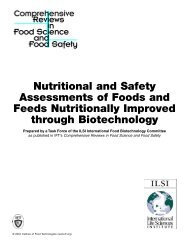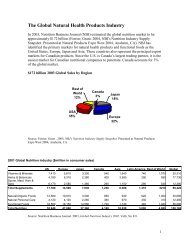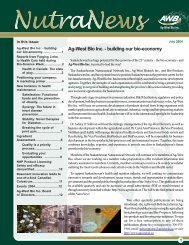Beyond Borders: Global biotechnology report 2010
Beyond Borders: Global biotechnology report 2010
Beyond Borders: Global biotechnology report 2010
Create successful ePaper yourself
Turn your PDF publications into a flip-book with our unique Google optimized e-Paper software.
The final 2009 IPO to close in the US was<br />
Omeros, which raised US$68 million in<br />
another early-October transaction. Unlike<br />
the two transactions discussed above,<br />
Seattle-based Omeros fits the mold of<br />
most biotech IPOs. The company’s most<br />
advanced product candidate, based on<br />
its PharmacoSurgery platform, is in<br />
Phase III trials.<br />
While Talecris saw its stock price increase<br />
A closer look<br />
Anatomy of a private equity IPO<br />
The largest IPO of 2009 was not a traditional transaction by<br />
biotech standards — both because of the size of the company<br />
and because of the size of the transaction. The IPO raised<br />
US$1.1 billion, including US$550 million of new money for the<br />
company, and provided a very healthy return for investors.<br />
North Carolina-based Talecris Biotherapeutics, which was<br />
carved out of Bayer in 2005, now has 5,000 employees and<br />
posted 2009 revenues of US$1.5 billion and a net income<br />
of US$154 million from the sale of plasma-derived protein<br />
therapeutics. The company’s legacy extends back many<br />
decades through several acquisitions, culminating with the<br />
purchase from Bayer by private equity firms Cerberus Capital<br />
Management and Ampersand Ventures for US$450 million — of<br />
which the investors contributed US$125 million and the rest<br />
was funded via Talecris debt and equity issuances. Ampersand<br />
also contributed a plasma business it had previously purchased.<br />
Following the carve-out, the company undertook a rapid vertical<br />
integration of its blood plasma supply chain to solidify its<br />
primary source of raw materials. At the end of December 2009,<br />
this consisted of 69 blood plasma centers. In 2006 and 2007,<br />
management and the board also focused on positioning the<br />
company for new product introductions and global expansion<br />
through investment in systems, R&D and the addition of a<br />
substantial number of new employees.<br />
from the date of the transaction through<br />
year-end, both Cumberland and Omeros<br />
demonstrated the risk that investors in<br />
small-cap stocks take. The stocks lost 19%<br />
and 30% of their IPO values by the end of<br />
2009, respectively.<br />
68 <strong>Beyond</strong> borders <strong>Global</strong> <strong>biotechnology</strong> <strong>report</strong> <strong>2010</strong><br />
Venture capital<br />
The trend of a small number of companies<br />
comprising a significant portion of total<br />
capital raised extended to venture-backed<br />
companies. In 2009, only 45 companies<br />
accounted for fully half of total venture<br />
capital raised by US companies. This total<br />
was led by the remarkable US$146 million<br />
raised by Boulder, Colorado-based Clovis<br />
Oncology. Clovis was founded by former<br />
executives of Pharmion, which was sold<br />
Michael Constantino<br />
Ernst & Young LLP<br />
On the financing side, in 2007, the firm’s PE backers executed a<br />
recapitalization transaction whereby Talecris borrowed in excess<br />
of US$1 billion and paid its investors a dividend of approximately<br />
US$800 million — already a sizeable return on the initial<br />
investment. In 2008, the company prepared for an IPO, but<br />
instead accepted a US$3.1 billion takeover offer from CSL Ltd.,<br />
itself a significant global player in blood fractionation derived<br />
products. The acquisition was ultimately not culminated because<br />
of anti-trust issues raised by the US Department of Justice.<br />
As a result, in 2009, Talecris jumped back into the IPO fray,<br />
debuting as a public company in an October 2009 transaction<br />
in which the company and its investors sold an aggregate of 56<br />
million shares at US$19 per share. Following the transaction,<br />
the company’s market capitalization was US$2.3 billion; the<br />
PE investors had received aggregate proceeds from dividends,<br />
sales of stock and other fees in excess of US$1.3 billion; and the<br />
investors still controlled approximately 50% of Talecris’ common<br />
stock — an incredibly successful outcome both for the business<br />
and its investors.








